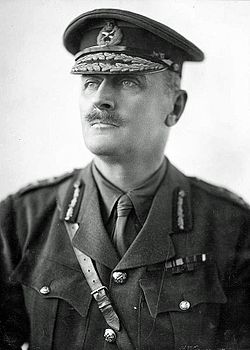| Cavalry Corps | |
|---|---|
| Active | October 1914 – March 1916 September 1916 – 1919 |
| Country | |
| Allegiance | British Crown |
| Branch | |
| Type | Cavalry |
| Size | Corps |
| Part of | British Expeditionary Force |
| Engagements | First World War |
| Commanders | |
| Notable commanders | Edmund Allenby |
The Cavalry Corps was a cavalry corps of the British Army in the First World War. The corps was formed in France in October 1914, under General Sir Edmund Allenby. It was later broken up in March 1916, but re-established in the following September. [1] It served as part of the British Expeditionary Force on the Western Front throughout its existence.
